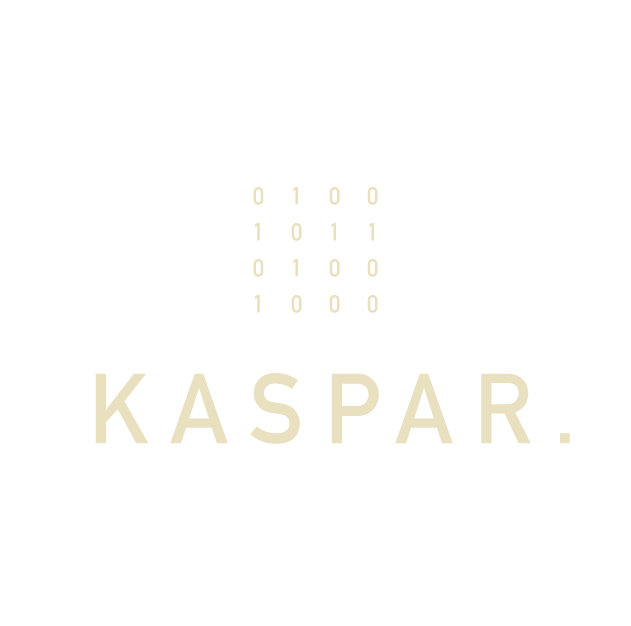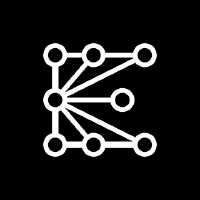Boundary AI
Build, test, observe and improve your AI apps with ease.
AI development AI toolkit BAML config language Large Language Models AI engineeringTool Information
| Primary Task | Apps |
|---|---|
| Category | technology-and-development |
| Sub Categories | api-and-development-tools machine-learning-models |
| Open Source | Yes |
| Country | United States |
| Industry | information technology & services |
| Technologies | Cloudflare DNS, Gmail, Google Apps, Wistia, Mobile Friendly, YouTube |
| Website Status | 🟢 Active |
Boundary AI is a comprehensive toolkit aimed primarily at facilitating tasks for AI engineers. Through its special config language known as BAML (Basically, A Made-up Language), it enhances the performance of LLMs (Large Language Models). With BAML, AI engineers can turn complex prompt templates into typed functions that are not only easier to execute but also to test, eliminating parsing boilerplate and type errors. In a sense, employing an LLM with BAML resembles invoking a regular function. Boundary AI also supports instantaneous testing of new prompts in various IDEs, including BAML's VSCode Playground UI. Furthermore, the toolkit includes Boundary Studio, a feature for monitoring and tracking the performance of each LLM function over time. Importantly, BAML is primarily coded in Rust and supports Openai, Anthropic, Gemini, Mistral, and self-brought models with plans to include non-generative models. Deployment with BAML generates Python or Typescript code. Unlike other data modeling libraries, BAML is uniquely typesafe and never obscures prompts. It features an integrated playground and can support any model. The BAML compiler, as well as the VSCode extension for BAML, are free and open source, with paid services starting for those using the monitoring and improving functions of Boundary Studio.
Boundary is a startup that participated in Y Combinator's Winter 2023 batch. The company develops tools for building reliable AI pipelines, focusing on Large Language Models (LLMs). Their mission is to make probabilistic AI systems behave like deterministic software, enhancing reliability and consistency in AI outputs.
The flagship product, BAML (Boundary Abstract Markup Language), is an open-source domain-specific language designed for building, testing, and managing prompts for LLMs. BAML is compatible with major LLM providers, helping developers structure and optimize their interactions with these models. Boundary also creates developer tools that ensure more reliable and consistent outputs from AI models, addressing the need for predictability in various applications.
| Pros |
|---|
|
| Cons |
|---|
|
Frequently Asked Questions
1. What is Boundary AI?
Boundary AI is a comprehensive toolkit designed primarily for AI engineers. The toolkit facilitates various tasks such as building, testing, observing, and improving AI applications. It includes a unique config language called BAML, which is used to enhance the performance of Large Language Models (LLMs). It also provides immediate testing of new prompts in various Integrated Development Environments (IDEs). Another essential feature of Boundary AI is Boundary Studio that enables monitoring and tracking of the performance of each LLM function over time.
2. What is BAML in Boundary AI?
BAML, standing for 'Basically, A Made-up Language', is a unique config language that is part of the Boundary AI toolkit. BAML works by transforming complex prompt templates into typed functions. By eliminating parsing boilerplate and type errors, BAML makes these functions easier to execute and test. Essentially, using an LLM with BAML feels like invoking a normal function. BAML is primarily coded in Rust and supports a broad range of models.
3. How does BAML enhance the performance of Large Language Models?
BAML enhances the performance of Large Language Models (LLMs) by converting complex prompt templates into typed functions. These typed functions, free from parsing boilerplate and type errors, are easier to execute and test. This not only facilitates faster LLM outputs but also boosts their accuracy and reliability.
4. How does BAML simplify complex programming tasks?
BAML simplifies complex programming tasks with its ability to convert messy and complicated prompt templates into on-point, typed functions. By eradicating parsing boilerplate and type errors, it makes typed functions easier to run and test. This transformation enhances code readability, makes debugging easier, and significantly reduces the room for error.
5. What IDEs does Boundary AI support?
Boundary AI supports several Integrated Development Environments (IDEs). This feature allows for instantaneous testing of new prompts. Although there isn't specific information about all the IDEs it supports, one of the explicitly mentioned one is the BAML's VSCode Playground UI, giving it efficient testing capabilities.
6. What is the purpose of the VSCode Playground UI in BAML?
The BAML's VSCode Playground UI is designed to offer real-time testing of new prompts directly within the IDE, enabling rapid and efficient development cycles. It simplifies the testing process by facilitating direct and immediate adjustments to the LLM functions.
7. What features does Boundary Studio offer in the Boundary AI toolkit?
Boundary Studio, an integral part of the Boundary AI toolkit, provides essential features for monitoring and tracking the performance of each LLM function over time. Though the specific attributes aren't explicitly mentioned, its primary function appears to centre around consistently maintaining the efficiency of the LLM functions performance.
8. In what languages is BAML coded?
BAML is primarily coded in Rust, a high-performance programming language. Using Rust signifies a keen focus on performance, memory safety, and parallelism. It does not, however, mention any secondary languages that might be used in BAML.
9. What kind of models does BAML support?
BAML supports a wide variety of models. Specific models mentioned include Openai, Anthropic, Gemini, Mistral, plus the option to use your own models. It's also worth noting that there are plans to include non-generative models in the future.
10. How does BAML assist in the deployment process?
In the deployment process, BAML aids in generating Python or Typescript code from BAML files. These files do not need to be installed on the actual production servers. The user can commit the generated code as they would any other Python or Typescript code, offering a smooth and efficient deployment process.
11. What are the benefits of BAML being typesafe?
Being typesafe confers several benefits on BAML. It leads to improved error detection at compile-time rather than at execution-time, enhancing the reliability of code. It also makes the code more maintainable and robust, reducing the risk of runtime errors. This serves to improve the overall efficiency and safety of code deployment for AI applications.
12. What is the role of an integrated playground in BAML?
An integrated playground in BAML offers a dynamic environment for developing, building, and testing AI applications with typesafe code, live updates, immediate feedback, and a better context for debugging. This can result in more efficient development cycles and higher productivity levels for AI engineers.
13. How can BAML support any model?
BAML can support any model due to its flexible and open-ended architecture. Its ability to transliterate complex prompt templates into typed functions allows it to accommodate a wide variety of models, both pre-existing and self-owned. This feature makes BAML highly adaptable, meeting the diverse needs of AI engineers.
14. What is the cost predicate for the VSCode extension for BAML?
The BAML compiler and the VSCode extension for BAML are 100% free and open-source. There is no cost associated with these tools, offering accessible and affordable solutions to AI engineers.
15. What additional benefits are offered in the paid services of Boundary Studio?
The paid services of Boundary Studio offer advanced features in areas of AI Monitoring, Collecting Feedback, and Improving AI pipelines. It is designed for those who require an enhanced level of control, precision, and feedback in their AI engineering.
16. Does the BAML compiler generate Python or Typescript code?
Yes, the BAML compiler generates Python or Typescript code. The generated code does not need to be installed on the actual production servers, thus simplifying the deployment process.
17. What are the security features of BAML?
BAML guarantees security by ensuring that its generated code never communicates with its servers. BAML does not proxy LLM APIs, meaning these APIs are called directly from the user's machine. Data traces are published to their servers only if the user explicitly enables it.
18. How does BAML compares it to other data modeling libraries?
When compared to other data modeling libraries, BAML exhibits significant advantages. Not only is BAML typesafe, which elevates its reliability, but it never obscures prompts, and it comes with an integrated playground. Unlike other libraries, it can also support any model, providing a more flexible and multi-purpose solution.
19. Why does BAML never obscure prompts?
BAML never obscures prompts to maintain code transparency. Hiding the prompts can lead to confusion and make the code difficult to understand and debug. By keeping the prompts visible, BAML ensures that developers have complete control and precise knowledge of what they are executing.
20. Why was BAML language created?
BAML was created to address the inadequacies of other existing languages in building SDKs for AI applications. The creators saw the need for a better Developer Experience (DX), so they created BAML using inspirations from technologies like Prisma and Terraform. The idea was to establish a language that was more equipped to handle the challenges presented by AI development.
Comments
Similar Tools
Related News

Fitbit, a pioneer in wearable health technology, is marking a significant evolution in personalized wellness today with the off...
@devadigax | Oct 27, 2025

Meta, the parent company of Facebook, has rolled out a new, somewhat controversial artificial intelligence feature to its users...
@devadigax | Oct 18, 2025

Meta, the parent company of Facebook, is rolling out an intriguing new artificial intelligence feature across the U.S. and Cana...
@devadigax | Oct 17, 2025

OnePlus has officially pulled back the curtain on OxygenOS 16, its highly anticipated iteration built upon the foundation of An...
@devadigax | Oct 16, 2025

As Microsoft prepares to bid a significant farewell to Windows 10, marking the end of an era, and simultaneously celebrates the...
@devadigax | Oct 16, 2025

In a significant leap forward for mobile creative professionals and enthusiasts alike, VSCO, the popular photo and video editin...
@devadigax | Oct 15, 2025
 AI Tool Buzz
AI Tool Buzz
 DeepSeek
DeepSeek Google AI Studio
Google AI Studio Dia Browser
Dia Browser OpenCV
OpenCV Kaspar AI
Kaspar AI EternalAI
EternalAI Galaxy.ai
Galaxy.ai Mistral AI
Mistral AI VibeHost
VibeHost